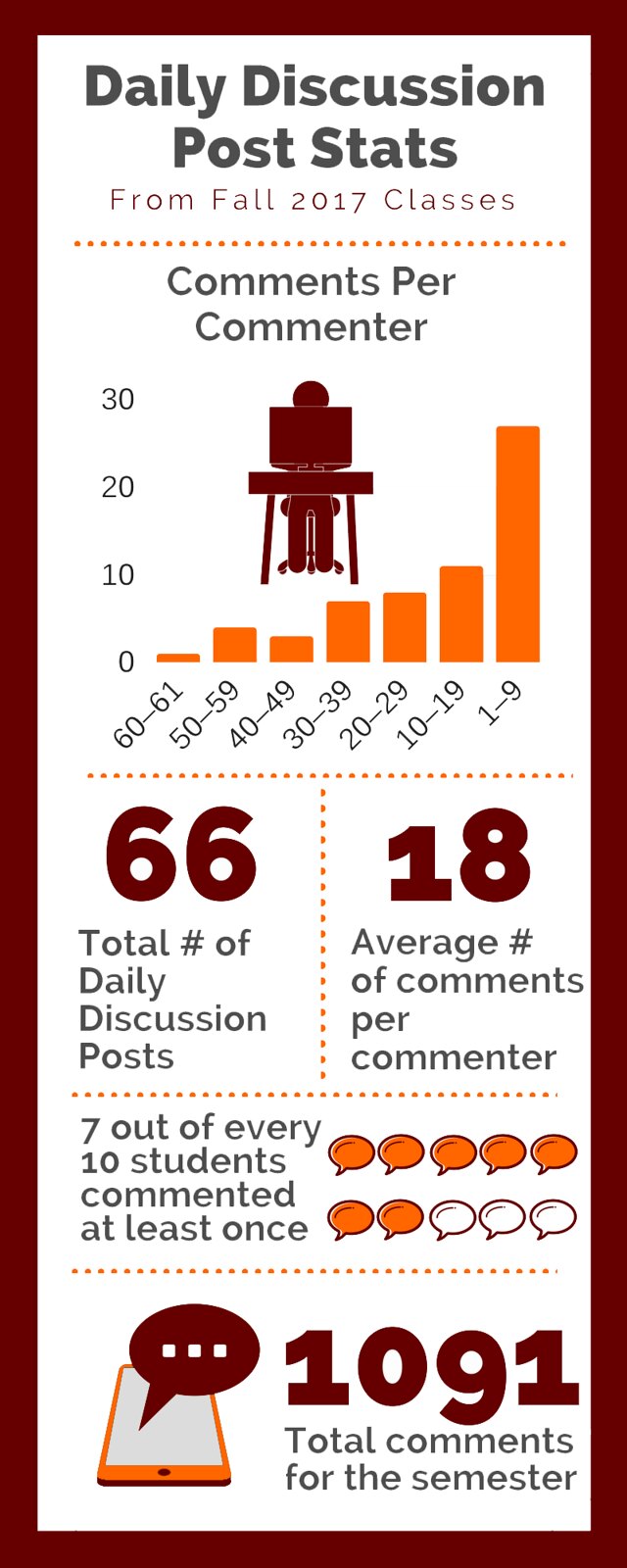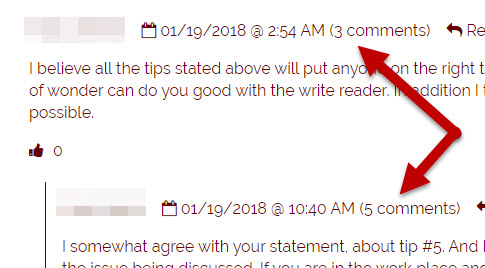You may wonder why we have more than one website for the course. In SPOT survey responses from last year, students said that there were times when they weren’t sure which website to use. One student commented, “This class was so confusing. There was so many different websites with content we had to keep up with on it.”
I certainly don’t want any of you to be confused, so I want to explain a bit more about the course sites with these FAQs.
What are the websites for the course?
We have three websites that are important to this course:
- The Canvas site: You will turn in all your graded assignments on the Canvas site. You can also find links every day in the Announcements.
- The Course Website (this site): the location for all course materials, daily readings, weekly work, policies, and other documents.
- The Assignments Website: the location of the assignments for all major assignments.
If you are working toward a grade higher than a B, you may also be visiting a third site: our group on Facebook.
Why are there so many different sites?
The three main sites are intended to work together
- Protect Your Privacy: The Canvas site has all of the university-approved FERPA (Family Educational Rights and Privacy Act of 1974 [U.S. Public Law 93-579]) protections in place that make sure your grades and related feedback are secure. It’s federal law that I make sure your information remains private, so the Canvas site is a must.
- Ensure Free, Open Resources: Textbooks cost a lot of money, which is why I am committed to using free materials as much as possible in this course. Virginia Tech can claim ownership of content that is posted in Canvas (according to IT anyway). I use my own websites so that I control the intellectual property rights for everything I write. If it’s mine, I can make sure it’s free.
- Save Time: Lots of course resources change a little bit from term to term, but there are some that essentially stay the same. In particular I noticed that the writing assignments for the major projects were not changing from one term to the next. I added the Assignments Website to save time, which I can then use to respond to your questions and take care of other thing for the course.
Why the separate Facebook Group?
The group page on Facebook is a little different main sites. I find the Discussions tool in Canvas awkward. It’s hard to see related comments easily, and everything is in one gigantic forum.
I have tried Slack, which I personally like. Students, however, haven’t responded as well. They find it hard to follow the ideas, which are not always visually separate. The long, scrolling text can be overwhelming. It doesn’t make sense to add one more thing for you to learn when it doesn’t work for everyone, so I stopped using Slack.
I also tried Piazza, which I know many engineering students are familiar with. I love that Piazza was designed by a woman engineer to help women do better communicating in their courses. The problem was that I never figured out how to manage the flow of ideas properly. I never felt sure that I was reading and responding to everything I should. I hated feeling that I might be missing someone’s question, so I gave up on Piazza.
I ended up choosing Facebook (for now anyway). It collects all the related comments together visually. It’s easy to tell one idea from the next. I know that Facebook is an “old person’s tool”; but students usually have a login and they know how it works. There’s nothing to learn, and it does everything we need it to.
How is the main course website set up?
The main course site seems logical to me of course. I made it, so I know where everything is. But that doesn’t mean it seems logical to you, so here’s what to find under each of the menus on the site:
- The Home Page
- All of the daily posts for the course in reverse chronological order (the most recent posts are at the top). This is where to look for details on what to read and what to do each week. Additionally, find the daily posts that give you additional information about the assignments and other topics in the course.
- Syllabus
- Official information on the course set up and policies (just like the syllabus in a face-to-face classroom). This additional course information is located under this pull-down menu on every page of the site.
- Accessibility Information
- Details on special accommodations for the course, including information on how to get more help.
- Schedule of Due Dates
- A list of the work that is due in the course. This menu item is a link to the page in Canvas that is always up to date.
- Course Logistics
- Explanation of how to find the work you need to do each week, how the daily discussion posts work, and how to keep up with the website.
- Succeeding in an Online Course
- Tips on what you can do to make sure you do your best work in this course. This menu item is a link to a permanent page with an infographic.
- When Your Grades Are Based on Labor
- Description of how you can benefit from the labor-based grading system in this course. This menu item is a link to a permanent page with an infographic.
- Requirements
- Explanation of the course assessment system, and a complete outline of work necessary in the course, including details on how to earn a grade higher than a B.
- Labor Log
- Description of the weekly journal requirements for the course, which contribute to the final exam in the course.
- Writing Groups
- Information on the online writing groups that are part of the peer feedback system in the course.
- Major Projects
- Brief description of the five major projects that are required in the course, with links to additional information.
- Final Exam
- Step-by-step instructions on how to complete the final exam assignment for the course.
- Course Help
- Links to information on the site that can help you do well. This page includes links only.
- Campus Resources
- Outline of places on campus where you can get more help for the course (like the Writing Center).
- Ten Ways to Improve Your Writing
- List of ten common strategies that will help you do better in the course.
- By Title
- Links to all the daily posts on the site, listed in reverse chronological order (the most recent posts are at the top).
- By Category
- Links to the daily posts on the site, sorted by the categories they were published in (e.g., #TuesdayTutorial).
- Sitemap
- Links to all of the pages on the site, in alphabetical order.
- Contact Info
- Form for visitors to the site to use if they want to send me a message. Students should email me directly or send a message in Canvas.
 I believe that a system that allows you to keep working until you get the results that fit the workplace is more humane than a system that punishes you if you aren’t perfect on the first try.
I believe that a system that allows you to keep working until you get the results that fit the workplace is more humane than a system that punishes you if you aren’t perfect on the first try.  I have worked in quite a few places, and in none of them did I ever receive a letter grade for the work that I did. Never ever. It just doesn’t work that way.
I have worked in quite a few places, and in none of them did I ever receive a letter grade for the work that I did. Never ever. It just doesn’t work that way. I adapted this strategy from Asao Inoue’s work on
I adapted this strategy from Asao Inoue’s work on  The most important benefits of this system are explained in the
The most important benefits of this system are explained in the  Work in this class is either ready to use in the workplace (and graded Complete) or it’s not ready (and graded Incomplete).
Work in this class is either ready to use in the workplace (and graded Complete) or it’s not ready (and graded Incomplete). You document the time you spend on activities and the level of intensity you put into your work in your labor log. You can think of tracking your work in your log as a parallel to tracking billing codes for what you do in the workplace.
You document the time you spend on activities and the level of intensity you put into your work in your labor log. You can think of tracking your work in your log as a parallel to tracking billing codes for what you do in the workplace.  In the workplace, you will find yourself reading and commenting on the projects of your coworkers frequently. The peer feedback activities in our class give you the chance to learn more about that process. Writing in the workplace is as much about what you write as it is about how you help others with their writing.
In the workplace, you will find yourself reading and commenting on the projects of your coworkers frequently. The peer feedback activities in our class give you the chance to learn more about that process. Writing in the workplace is as much about what you write as it is about how you help others with their writing.
